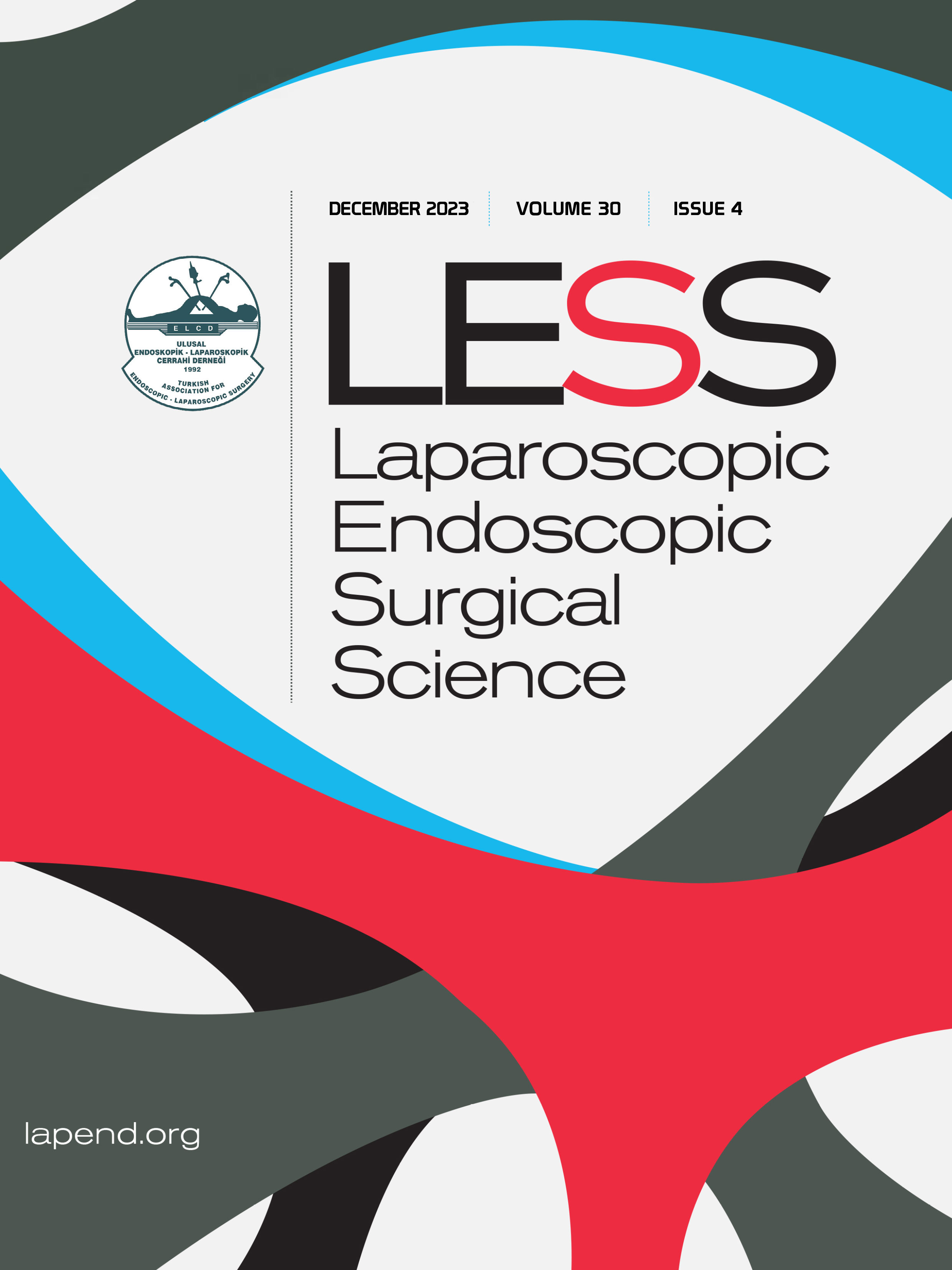Volume: 15 Issue: 3 - 2008
| REVIEW | |
| 1. | Is obesity a negative factor for laparsocopic renal surgery? Öner Şanlı, Selçuk Erdem, Rauf Naghiyev Pages 98 - 106 Laparoscopic Renal Surgey (LRS) was first applied in the beginning of 1990s and entered into urological armamentarium. In past twenty years, due to both surgical and technological developments, LRS is being performed in many centers worlwide. On the other hand, it is well known that obesity is a growing major public health problem all over the world, especially in the industrialized countries. Obesity has disadvantages of cardiovascular risk, deep vein thrombosis, pulmoner and metabolic problems. Moreover, umbilical and perivesical fatty tissues of obesity nature increased tendency for intra and postoperative complications. In first ten years of experience, urologists suggested that obesity was a risk factor for LRS. Furthormore, it was accepted that obesity should be considered as a contraindicative criterion for LRS. However in course of time, increasing surgical experience and technologic novelties provided some modifications on LRS and thus articles suggesting the application of LRS in obese patients were publicated in the literature. In the light of our below-mentioned experience and briefly summarized literature, we think that LRS can be safely performed in obese patients as well. |
| 2. | Laparoscopy in pediatric urology: Current applications Tayfun Oktar, Akın Soner Amasyalı, Öner Şanlı Pages 107 - 116 For decades pediatric urologists have been performing laparoscopy for non-palpable testis. The passage from diagnostic to therapeutic indications has been a long and hesitating procedure for pediatric urologists. During the 1990s laparoscopic renal surgery was limited to ablative indications and was used only in a limited number of centers. In the early experience of the procedure, the indications for laparoscopy in pediatric urology were unclear and unproven compared with the advantages of open procedures. It is only in the last several years that laparoscopy has been considered an essential part of the medical equipment of pediatric urologists and advances in technology will facilitate this expansion. In the present review, the current status of laparoscopic surgery in terms of pediatric urology was evaluated. |
| 3. | Robotic assisted laparoscopic radical cystectomy and intracorporeal studer urinary diversion A. Erdem Canda, M. Fuat Özcan, Ziya Akbulut, Ali Fuat Atmaca, A. Tunç Özdemir, M. Derya Balbay Pages 117 - 124 Radical cystectomy is currently the gold standard in the surgical management of invasive bladder cancer. Laparoscopic and robotic radical cystectomy are considered among the minimally invasive surgical treatment options. Urinary diversion could be performed either extracorporeally or intracorporeally concerning these approaches. Currently, very limited number of publications exists in the English literature regarding robot assisted laparoscopic radical cystectomy and intracorporeal Studer pouch formation. Among these series, the number of patients are small with short and medium term follow-up. Between February 2009 and April 2010, 11 patients underwent robot assisted laparoscopic radical cystectomy and intracorporeal Studer pouch formation in our institution. This minimally invasive approach seems to have acceptable surgical, oncologic, functional and cosmetic outcomes in experienced centers. Prospective, randomized studies with larger numbers of patients and with a longer follow-up are needed Further studies are needed in order to evaluate the outcomes of this surgical approach. |
| 4. | Laparoscopic treatment of simple renal cysts Emre Can Akınsal, Mustafa Sofikerim Pages 125 - 130 In this review, our aim was to summarize laparoscopic management of simple renal cysts when treatment is indicated. Simple renal cysts are common in the general population. Although usually asemptomatic, renal cysts may cause pain, hipertansion and obstruction. When minimally invasive techniques become popular, laparoscopic approaches have been entered among the treatment options. Transperitoneal and retroperitoneal approaches have been described in laparoscopic renal cyst management. Findings suggest that, except for the operation time, transperitoneal and retroperitoneal approaches have similar results. When treatment is indicated, laparoscopic cyst decortication is an effective and durable treatment option. The greater and durable success rates of this minimally invasive technique may favor this treatment option over other treatment modalities. |
| 5. | The role of laparoscopic surgery in the treatment of urinary stone disease Murat Binbay, Abdulkadir Tepeler Pages 131 - 138 With the advances in extracorporeal shock wave lithotripsy (SWL) and endourological procedures such as percutaneous nephrolithotomy (PNL), and ureterorenoscopy (URS) the treatment of urinary stone disease changed markedly. The indications of open renal surgery in the treatment of renal calculi are limited to several special situations and it is needed in only 0.47-5.4% of the cases. Similarly, in the recent years with the development of techniques in laparoscopic surgery, guidelines and indications are further modifying. Today, laparoscopic nephrectomy has been regarded as the gold standart procedure for the management of nonfunctioning kidneys due to urinary stone stone disease and other benign conditions. Laparoscopic surgery is the procedure mimicking principles of open surgery via a trocar. Therefore laparoscopic surgery has some advantages to open surgery such as low postoperative morbidity, reduced hospital stay and minimal blood loss. And it is clearly underlined that when expertise is available, laparoscopic surgery should be considered before proceeding to open surgery. In this review the indications and advantages/disadvantages of laparoscopic surgery in the management of urinary stone disease will be discussed in the light of recent guidelines and literature. |
| 6. | How urological laparoscopy education should be? Emrah Topbaş, Selçuk Güven Pages 139 - 144 Laparoscopic techniques are difficult to master, especially for surgeons who did not take such training during residency. Many of the laparoscopic procedures require a significant learning curve. Taking into consideration the time wasting, costs, stress and ethical considerations, the modern operating rooms can not be defined as ideal training areas. Aiming urologists to apply laparoscopy effectively, training programs incorporating evidence-based training principles have the potential to produce excellent surgeons without compromising patient safety. These programmes can be for long or short time periods. Hence, different institutions offer different urological laparoscopic training programs. In this paper, we reviewed the laparoscopic urologic training. |















